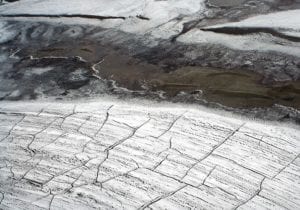A new study has found that it is possible to neutralize the dangerous climate effects associated with the phenomenon of rapidly thawing permafrost.
With the Arctic warming twice as fast as the rest of the planet the threat presented by the rapid thawing of permafrost is very real. As one of the largest natural reservoirs of organic carbon in the world, thawing permafrost can potentially release carbon dioxide and methane, into the atmosphere. These massive amounts of methane have been described by some as a ticking time bomb, however a study by researchers from the International Institute for Applied Systems Analysis notes that it is possible to neutralise the natural gas threat by reducing the amount of methane emissions from other sources.Phasing out fossil fuels
In their analysis, the researchers quantified the upper range value for natural methane emissions that can be released from the Arctic tundra, as it allows it to be put in relation to the much larger release of methane emissions from human activities.“It is important to put the two estimates alongside each other to point out how important it is to urgently address methane emissions from human activities, in particular through a phase out of fossil fuels,” Lena Höglund-Isaksson, a senior researcher with the IIASA Air Quality and Greenhouse Gases Program and one of the authors of the study published in Nature Scientific Reports earlier this week.








